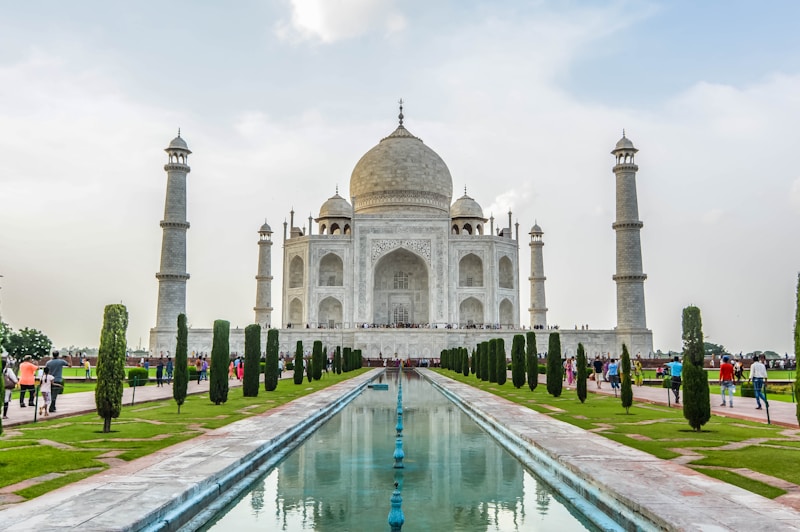10 Questions
What significant event led to Tripura becoming a separate state within India?
The independence struggle
Which of the following was NOT a local revolutionary leader during Tripura's independence movement?
Narendra Modi
What major historical event occurred on October 21st, 1949, in relation to Tripura?
Tripura merged into the Indian union
During the colonial era, which administrative division did Tripura belong to?
Bengal Presidency
What is one of the key features that makes modern Tripura distinct?
Presence of lush green forests
What event paved the way for colonialism in Tripura?
Arrival of missionaries spreading Christianity
Which European group first arrived in Tripura during the early 18th century?
Colonial Era Europeans
What is the significance of 'Vishnupur' in relation to the Kingdom of Tripura?
It was a town named after god Vishnu
How did the British attempt to expand territorial control over Tripura?
Collecting tax dues from the Maharaja
What cultural heritage can still be observed in Ujjayant Palace in Tripura?
Architecture and religious practices
Study Notes
History of Tripura: A Journey through Time
Located in northeast India, Tripura is a state with a fascinating past shaped by its diverse cultures, political transitions, and cultural exchange. Here's a brief overview of some key moments and periods in Tripura's history:
Modern Developments
The modern period has seen significant changes in Tripura's administrative structure, with it becoming a separate state within India after playing host to various rulers throughout its history. It was part of the Bengal Presidency during British rule until 1971 when it became one of the seven states created from the Indian province of East Pakistan. Today, Tripura is known for its natural beauty, including lush green forests and wildlife sanctuaries such as Gumti Wildlife Sanctuary, and is home to several tribes who have preserved their unique customs and traditions over time.
Independence Movement
During the independence struggle, Tripura played a crucial role due to its strategic location near India’s international borders. The freedom fighters were active here and established secret headquarters under the leadership of local revolutionaries like Rishikanta Bhowmik, Suresh Chandra Dasgupta, Shyamaprasad Ghosh, Kanchan Lata Majumdar, etc.. After India gained her independence from Britain, Tripura merged into the Union on October 21st, 1949.
Kingdom of Tripura
Before being absorbed into the Indian union, Tripura had been ruled by Kings for centuries. In ancient times, it was a kingdom whose kings bore names similar to the Hindu gods Vishnu and Indra. Over time, this kingdom grew significantly powerful; its influence stretched so far that even today, there exist many towns named 'Vishnupur', which means town of god Vishnu, thereby attesting to his holdings at the apogee of his power. However, things took a turn for the worse later on when outside influences led to wars among princes and robbery of treasures, resulting in great misery.
Colonial Era
Europeans first arrived in the early 18th century, initially interested only in trade. During this period, they started minting coins using indigenous designs from the late 18th century onwards. Later came missionaries trying to spread Christianity among the locals. These events paved way for colonialism whereby the British gradually expanded their territorial control over different parts of Tripura. At one point, the British even attempted to take away all the royal jewellery of the Maharaja of Tripura on the pretext of collecting tax dues; however, both sides eventually reached an understanding.
Cultural Heritage
Throughout its history, Tripura has maintained its rich cultural heritage, evident in its arts, architecture, music, dance forms, handicrafts, folk tales, religious practices, and festivals. This heritage can still be found in places like Ujjayant Palace, a grand building built by Maharaja Ramendra Singh in the middle of a lake surrounded by high walls covered in greenery. Additionally, Tripura also houses more than forty species of orchids, making it one of the richest collections in eastern India.
In summary, Tripura has journeyed from a kingdom with its own set of rules and beliefs to become an integral part of the Indian nation while maintaining much of its unique culture. Its historical development reflects the country's broader shifts towards democracy and integration with other nations post-independence.
Test your knowledge of Tripura's rich history through this quiz that covers key moments, such as its independence movement, royal past, colonial era, and cultural heritage. Discover fascinating facts about the state's transition to statehood within India and its diverse cultural influences.
Make Your Own Quizzes and Flashcards
Convert your notes into interactive study material.



